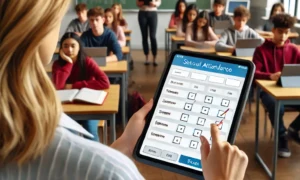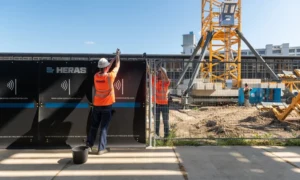Businesses with mobile workforces must effectively track employee locations. Having real-time knowledge of your personnel’ whereabouts is beneficial for increasing operational effectiveness, enhancing customer service, and ensuring employee safety, whether you are in charge of a delivery service, field sales team, or maintenance crew. In this blog post, we’ll go through the key considerations you should make when selecting the finest software to accurately track employee location.
Overview on Employee Location Tracking
Employee location tracking is a thorough procedure that requires keeping track of workers’ whereabouts and motions both within and outside the office. It collects information about the precise locations of employees using a variety of technologies, including the Global Positioning System (GPS), Radio Frequency Identification (RFID), Wi-Fi, and mobile devices. This information is used for a variety of tasks, such as boosting security measures, tracking worker productivity, and maximizing resource allocation inside businesses.
KPI of Employee Location Tracking App:
Here are some keys to consider before selecting the best field employee tracking tool for your sector.
1. GPS Tracking Accuracy:
The accuracy of employee field tracking apps must be taken into consideration. Search for apps that make use of GPS technology, which offers accurate location data. Real-time tracking updates should be provided by the app, which should make use of the mobile devices’ built-in GPS capabilities. Check the frequency of location updates and how well they correspond to actual employee movements to determine how accurate the app is. Look for apps with a high level of accuracy to reduce errors and give precise tracking employee location information.
2. Real-Time Location Monitoring:
Real-time employee location tracking is a requirement of the best employee time tracking software. Employers can use this tool to examine a map showing the current whereabouts of their field personnel. Real-time updates enable proactive delay management, route optimization, and proximity-based task assignment. Make sure the app has a user-friendly interface that enables easy access to and interpretation of location data. Consider features like the ability to pan the map, zoom in, and track many employees locations at once.
3. Geofencing Capabilities:
You can create virtual limits on a map with the help of the sophisticated function known as geofencing. The software notifies pertinent stakeholders when an employee enters or exits these preset zones. Geofencing assists in ensuring that workers stay inside their assigned areas, tracking workers’ arrivals and departures from the site, and enhancing safety by notifying managers of any sudden deviations. In order to set up several geofences, modify their size and shape, and set up specific actions or notifications that are triggered by geofence crossings, look for programs that provide configurable geofencing options.
4. Battery Optimization:
The batteries on employees’ devices can be quickly depleted by continuous GPS use. Look for tracking programs that place an emphasis on battery conservation. These applications carefully control GPS usage, reducing the battery drain. To balance accurate monitoring with power conservation, features like adaptive tracking intervals, which change the frequency of position updates based on movement speed, can be helpful. Additionally, several apps provide settings for power-saving modes, enabling workers to conserve battery life as needed.
5. Privacy and Data Security:
When using remote worker tracking software, it’s important to respect employees’ privacy. Make sure the app conforms with privacy laws and offers effective security measures to safeguard sensitive data. When searching for features to protect employee location data, look for things like encrypted data transmission and secure user authentication. Maintaining employee trust also requires clear privacy policies and effective permissions control within the app.
6. Customization and Reporting:
Think about your unique tracking requirements and assess whether the software enables customization to meet your business demands. In order to create location-based reports, track past travel trends, and evaluate staff performance, look for apps that offer versatile reporting choices. The software may be tailored to meet your specific tracking needs thanks to its customizable features. Search for apps that offer configurable alerts and notifications so you can set up certain triggers and get real-time updates based on your preferences.
7. Integration and Scalability:
Assess the app’s compatibility with your current systems, such as tools for task assignment or workforce management. A unified picture of personnel data can be provided by integration, which can also speed up procedures. The app’s scalability should also be taken into account. Will it support the expansion of your company and the growing number of your employees without compromising quality? A scalable app will allow you to handle a big amount of location data, expand geofence restrictions, add or remove users with ease, and handle scalability choices.
Conclusion:
Efficiently track employee location is essential for businesses with a mobile workforce. Consider factors such as GPS tracking accuracy, real-time employee location monitoring, geofencing capabilities, battery optimization, privacy, and data security, customization and reporting options, integration, and scalability. By selecting an app like DeskTrack employee productivity monitoring software that aligns with your business needs and priorities, you can enhance operational efficiency, improve customer service, and ensure the safety of your employees in the field.








































